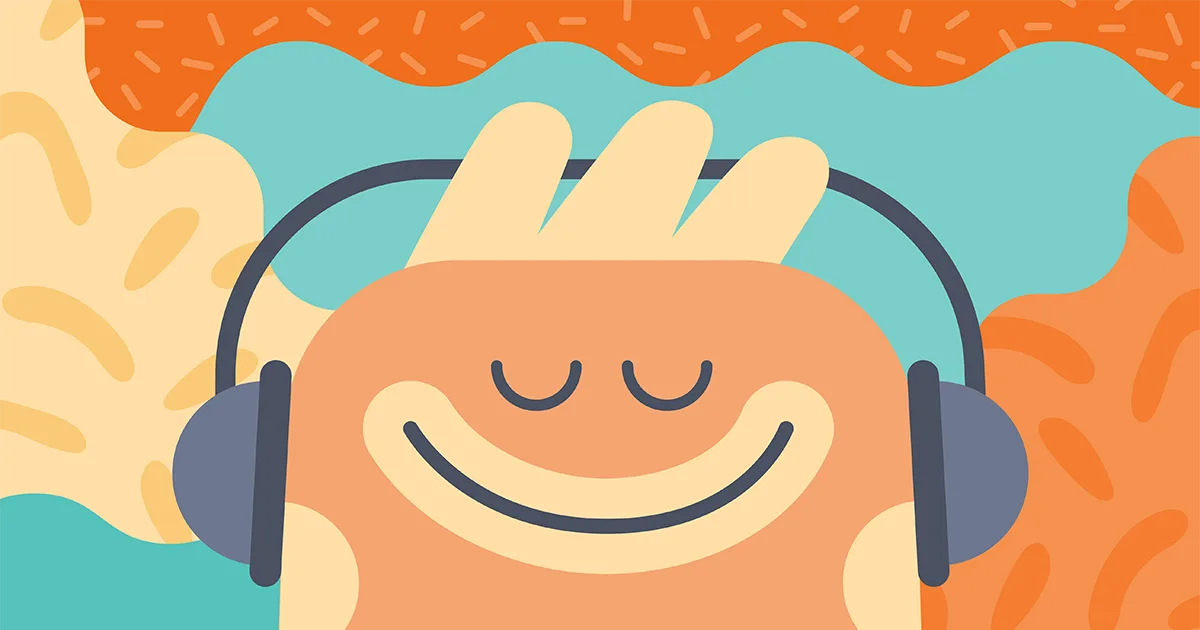Relaxation meditation for stress relief
By Your Headspace Mindfulness & Meditation Experts
Feb 8, 2024
For most of us, stress is an unpleasant part of our daily existence. However, just because stress is unavoidable doesn’t mean it has to dominate your life. Relaxation meditation — which typically involves cultivating calm by using an object of focus, such as your breath or a visualization — can be one effective tool to help manage and ease stress. The best part? It’s available to all of us, anywhere and anytime we need it. In fact, many people find learning to consciously relax the mind and body through basic meditation techniques leads not only to reduced stress, but also to better mental and physical health, and a better quality of life. Here’s everything you need to know about relaxation meditation to get started.
Feeling stressed? Try this 1-minute “Let Go of Stress” relaxation meditation

Mini-Meditation: Letting Go of Stress
1 min
Why relaxation is important to our well-being and overall health
Have you ever laid awake in bed the night before an important deadline, unable to sleep with too many thoughts racing through your mind? It happens to all of us. That’s because stress stimulates the part of our nervous system — called the sympathetic nervous system — that triggers that all too familiar “fight-or-flight” response. This causes the body to release natural stress hormones (i.e., adrenaline and cortisol) into the bloodstream, giving you extra energy to help “cope” with stress.
When this happens on a regular basis, it creates a big problem: chronically surging hormone levels can take a toll on the mind and body, leading to several physical and mental health issues including depression, insomnia, and high blood pressure.
Alternatively, when our bodies and minds are relaxed — whether through meditation practice or other techniques — the parasympathetic nervous system is stimulated, which causes the body to stop releasing stress hormones, lowers the heart rate, and promotes a sense of calm. What a relief! Over time, through regular meditation practice, we can learn to condition our bodies to relax on demand.
Relaxation meditation benefits
A 2018 study found that people who used Headspace for only 10 days reported an 11% decrease in stress; after 30 days of using Headspace, they reported a 32% decrease. A separate 2018 study showed that medical students who used Headspace for 10 days had a 12% decrease in stress; this number rose to 17% after 60 days.
Why is reducing stress such an important thing?
The truth is, stress reduction can diminish the symptoms of many health conditions including inflammation, anxiety, and insomnia. When it comes to reducing inflammation in the body specifically, a general meditation study published in 2013 showed that meditation can actually change the expression of our genes. In other words, relaxing the body through meditation dampens the genes involved in the inflammatory response and promotes the genes associated with DNA stability. In this way, meditation practice can help increase mental resilience to future stress by strengthening our gene resilience. That’s a pretty convincing reason to start establishing a daily meditation practice, right?

How to use relaxation meditation techniques in just 10 minutes
So how do you relax using meditation? (And keep in mind that not every meditation technique is meant for relaxation.) There are multiple stress-relieving techniques you can try, most of which involve focusing your attention on the breath or an object that promotes calmness and increases body awareness. We’ll take you step by step through one of the more popular 10-minute methods below, but remember, it doesn’t matter which technique you choose. To get the most out of meditation, what matters is that you practice regularly and strive toward making it a part of your daily routine.
1. Breathe deeply
There’s a reason so many meditation techniques involve taking long, slow, deep breaths: it’s an incredibly effective, scientifically proven way to relax the mind and the body. Researchers at Columbia University found that slow, deep breathing was associated with reductions in stress in groups affected by post-traumatic stress disorder, as well as groups managing daily stress. Essentially, through regular deep breathing meditation practice, we can learn to relax on demand. Here’s how to do it:
2. Focus on your breath
Find a quiet space and get comfortable. Take five deep, audible breaths — in through the nose and out through the mouth — focusing on the sensation of your breath. As you breathe in, think about taking in fresh air and expanding the lungs; as you breathe out, think about letting go of any stress in the body and mind. On the last exhalation, let your eyes gently close.
3. Check-In
Pause and take a few moments to settle into your body. Acknowledge your senses, noticing anything you can smell, hear, taste, or feel.
4. Body scan
Scan your body from head to toe, observing any tension or discomfort. Scan a second time, observing which parts of the body feel relaxed. Take about 20 seconds for each scan.
5. Awareness
Notice any thoughts that arise without attempting to alter them. Note your underlying mood, becoming aware of what’s there without judgment.
6. Back to the breath
Again, return your attention to your breathing. Don’t make any effort to change it; simply observe the rising and falling sensation in your body. Focus on the quality of each breath. Is it deep? Shallow? Long or short? Fast or slow?
Now, silently count the breaths: 1 as you inhale, 2 as you exhale, 3 on the next inhalation, and so on, up to 10. Then start again at 1. If thoughts bubble up or your mind starts to wander, don’t worry. Just guide your attention back to the breath.
7. Just sit
Spend 20 to 30 seconds just sitting, allowing your mind to be free. It doesn’t matter whether you’re calm and focused or inundated with thoughts — just let your mind simply be.
8. Prepare to finish
As your practice comes to an end, bring your awareness once again to anything physical you may be experiencing. For example, your posture or where your feet make contact with the floor. Notice anything you can hear, smell, taste, or feel.
Try to recognize how your mind feels and then make an intention to carry those feelings of calm and relaxation into the rest of your day.
Try relaxation meditation with Headspace
Be kind to your mind with a 10-day beginner’s course on the meditation basics — available in the Headspace app during your free trial. From there, once you gain more experience and confidence, you can explore the whole library of content, covering everything from sleep, compassion, and sports to anger, stress, focus, and more. Headspace also offers several mini-meditations — most are 3 minutes or shorter — if you need some quick stress relief. Get started today!
Begin reaping the benefits of meditation for stress relief — get started using Headspace today!
READ NEXT: Breathing exercises to reduce stress


Be kind to your mind
- Access the full library of 500+ meditations on everything from stress, to resilience, to compassion
- Put your mind to bed with sleep sounds, music, and wind-down exercises
- Make mindfulness a part of your daily routine with tension-releasing workouts, relaxing yoga, Focus music playlists, and more
Annual - billed at $69.99 USD/yr
14 days free
$5.83 USD/month
Monthly
7 days free
$12.99 USD/month

Learn more about meditation

Stay in the loop
Be the first to get updates on our latest content, special offers, and new features.
By signing up, you’re agreeing to receive marketing emails from Headspace. You can unsubscribe at any time. For more details, check out our Privacy Policy.
- © 2025 Headspace Inc.
- Terms & conditions
- Privacy policy
- Consumer Health Data
- Your privacy choices
- CA Privacy Notice






